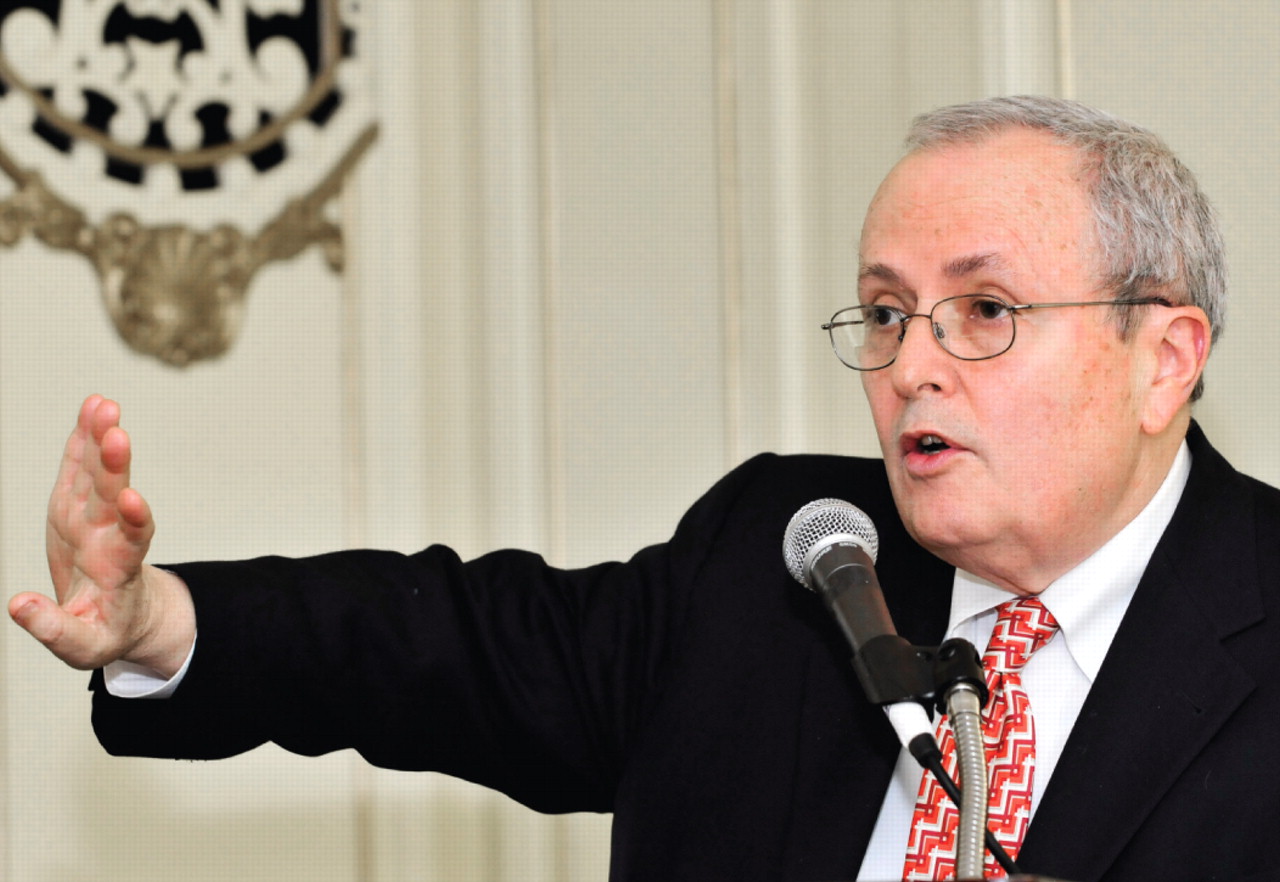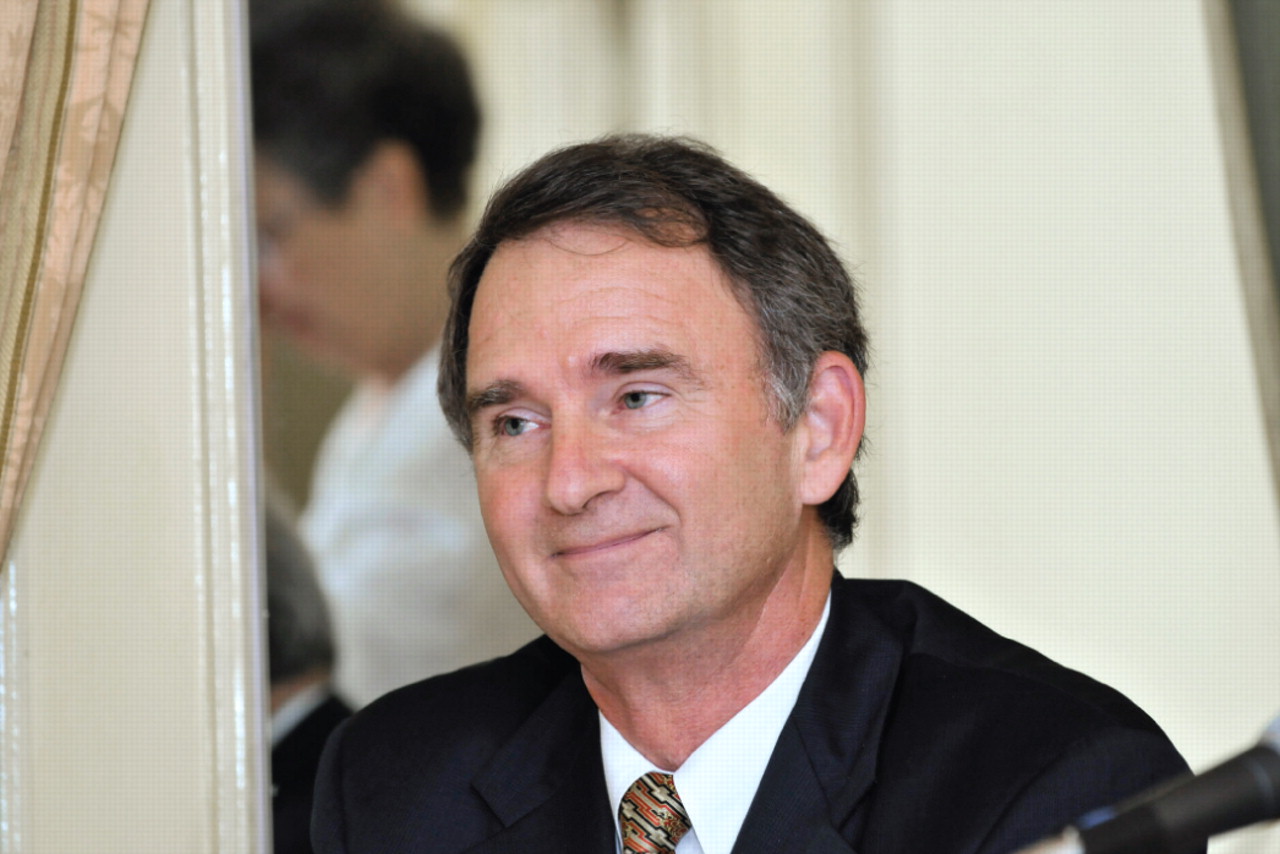Single Payer or Individual Tax Credit: Which Reform Proposal Is Best?
What do you want to see, a publicly funded national health insurance system—the “single-payer” solution—or insurance reform and tax credits to empower individuals to buy their own insurance?
One promises universal coverage, a unified market that puts an end to cost shifting and adverse risk selection, and freedom from corporate oversight of medicine. The other promises greater individual buying power and choice of insurance plans.
These choices were discussed at APA's Institute on Psychiatric Services in Chicago—a month prior to the presidential election—when past APA President Steven Sharfstein, M.D., and John Kay, J.D., a member of the AMA's Board of Trustees, argued the merits of the competing proposals to reform the American health care system (see also Original article: Stotland Vows to Educate Members About Health Reform Choices).

Past APA President Steven Sharfstein, M.D., says APA should support a single-payer plan for health system reform, because it is the best one for psychiatrists.
Credit: Ellen Dallager
Sharfstein, a long-time supporter of the single-payer solution and a member of the Physicians for a National Health Plan and the AMA, urged APA to advocate for the proposal and said psychiatrists had special reasons to be drawn to a single-payer system.
He is president and chief executive officer of Sheppard Pratt Health System in Baltimore.
“I believe that for the average psychiatrist in private practice, in community practice, in hospital practice, and in academic medicine, single payer is the best option,” Sharfstein said. “If you talk to colleagues in Canada, which is a model for single payer, they can't believe what we deal with in this country. Ask them how much time they spend billing—10 minutes a week. Patients have choice [of physicians], and psychiatrists make on average $200,000. It seems to be a no-brainer for them.”
The AMA, in turn, offers a proposal of insurance reform and tax credits to allow individuals to buy their own insurance. Kay, arguing the case, said the AMA plan was politically feasible and a more practical solution to an issue that has plagued American policymakers for 30 years.
“The AMA has worked very hard to come up with a plan that we believe will work for everyone,” Kay said. “We think income-related tax credits are the best way to modify behavior and address problems. And it works best for those who need it most—low-income people. It puts money in the hands of people to obtain their own insurance.
“Politically this is an idea whose time has come,” Kay said, adding that the AMA's proposal has already received bipartisan support in Congress.

AMA Board member John Kay, J.D., speaks on behalf of the AMA's proposal for health insurance reform and tax credits to give individuals resources to buy their own health care.
Credit: Ellen Dallager
Kay said a single-payer system would be costly, require increased government regulation, and restrict choice of physicians and cause patients to wait excessive amounts of time for essential services. “I say treatment delay is no treatment at all,” he said. “The single-payer system is delayed treatment.”
Arguing for a total overhaul of current policies in favor of a single-payer system, Sharfstein employed cartoons depicting the sometimes absurd contortions of the American health care system—like the drawing of a doctor consoling a woman in a waiting room about the death of her loved one with the words: “We did all we could, but the paperwork was too much.”
Sharfstein outlined the key features of a single-payer system: universal, comprehensive coverage; no out-of-pocket payment; a single insurance plan for each region of the country administered by a public or quasi-public agency; and global operating budgets for hospitals and other health care systems and providers with separate allocation of capital funds.
A publicly funded national health insurance program would also feature public accountability, as opposed to accountability to corporate dictates, and a ban on for-profit health care providers, he said.
“One of the big issues around single payer is that people don't want government telling us what to do,” Sharfstein said. “Well, today what we have is a lot of unaccountable private corporations telling us what we can do and where we can go.”
He emphasized that the familiarity of psychiatrists with insurance discrimination and administrative hassles should make the single-payer option especially appealing to APA members. And Sharfstein was especially critical of the enormous amount of administrative waste in a fragmented, privatized system.
“We have a huge overhead,” he said. “In my hospital [at Sheppard Pratt Health Care System, in Baltimore], we have 70 staff just to collect bills. A similar hospital in Canada with the same number of beds has one or two people.”
Sharfstein noted that a study in the April Annals of Internal Medicine found that psychiatrists support the establishment of national health insurance more than any other medical specialists do; 83 percent of psychiatrists say they favor a single-payer system, compared with 59 percent for all other medical specialists.
Finally, he argued that a national health insurance program serves public health needs by covering everyone and spreading the insurance risk across the entire population. Also, the current patchwork quilt of hospital, outpatient, and emergency services encourages cost shifting from one sector of the system to another, raising costs and creating inefficiencies and inequalities.
“Only single payer would eliminate administrative waste and other inefficiencies, freeing funds to cover the uninsured,” Sharfstein said.
“APA should endorse single payer as the best option for America,” he concluded, adding with a nod to presidential candidate Barack Obama “for change we can believe in.”
Kay, in turn, outlined the basics of the AMA proposal for tax credits and insurance reform. “After you figure your tax liability, [the federal government] would subtract an additional amount so that you will get money back,” he said. “And you can use it as an advance. If you don't use the credit to buy health care, you can't take advantage of it.
“In addition to providing greater choice for patients, it offers greater savings overall,” Kay said. “The cost of individual coverage is 60 to 65 percent less than what it costs in premiums to have the same person insured by [his or her] employer.”
Kay stressed also the need for streamlined regulation of insurance to eliminate the multitude of state mandates “Right now we have to pay for every idiosyncratic change that is made in 50 states and the District of Columbia,” he said. “We need one set of rules for all insurers.”
But much of Kay's argument was more about what he described as the perils of a single-payer system. He especially emphasized the waiting lists for some specialty services in Canada and noted that on at least two occasions Canadian citizens sued the government for delay of services and lack of access to private insurance that might have provided access to more timely service.
Sharfstein countered that there were more than enough horror stories on the U.S. side of the border. “There are plenty of people literally dying in emergency rooms for lack of insurance,” he said. Moreover, according to basic public health indices, he said, the United States is falling far short of other countries.
“We are just slightly ahead of Portugal for what we get in terms of health for what we are paying,” he said.
More information about the AMA's proposal is posted at<www.voicefortheuninsured.org>.▪



